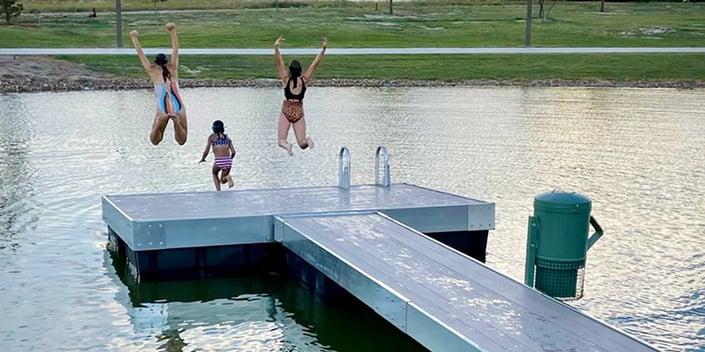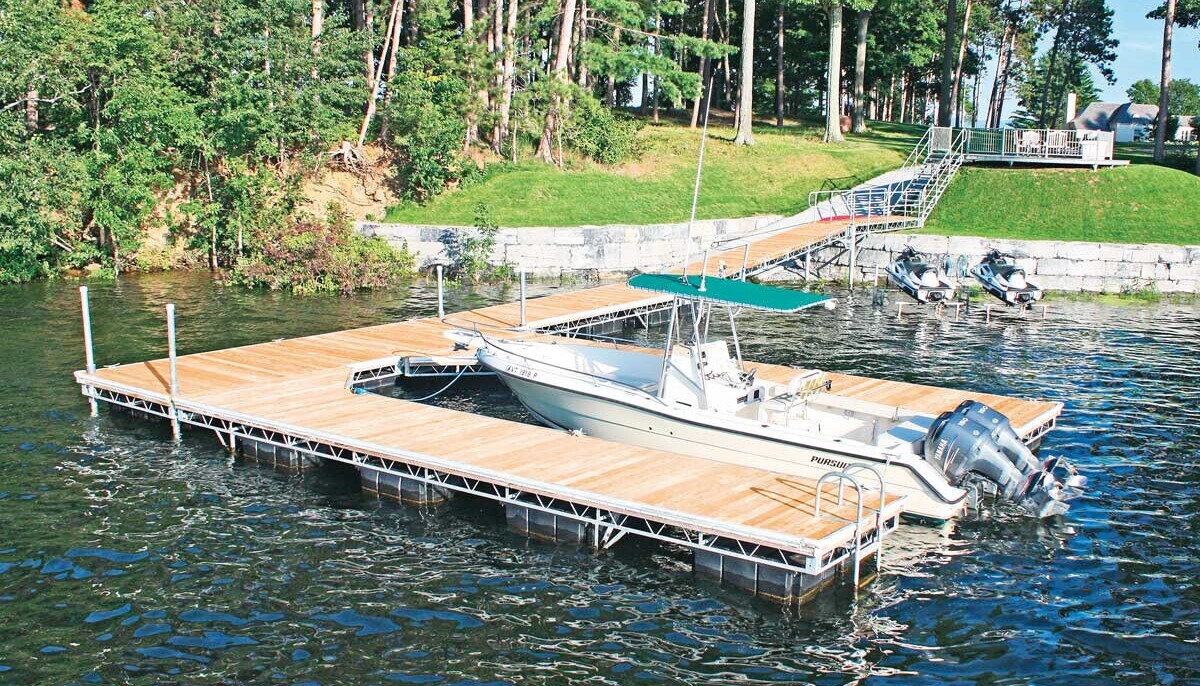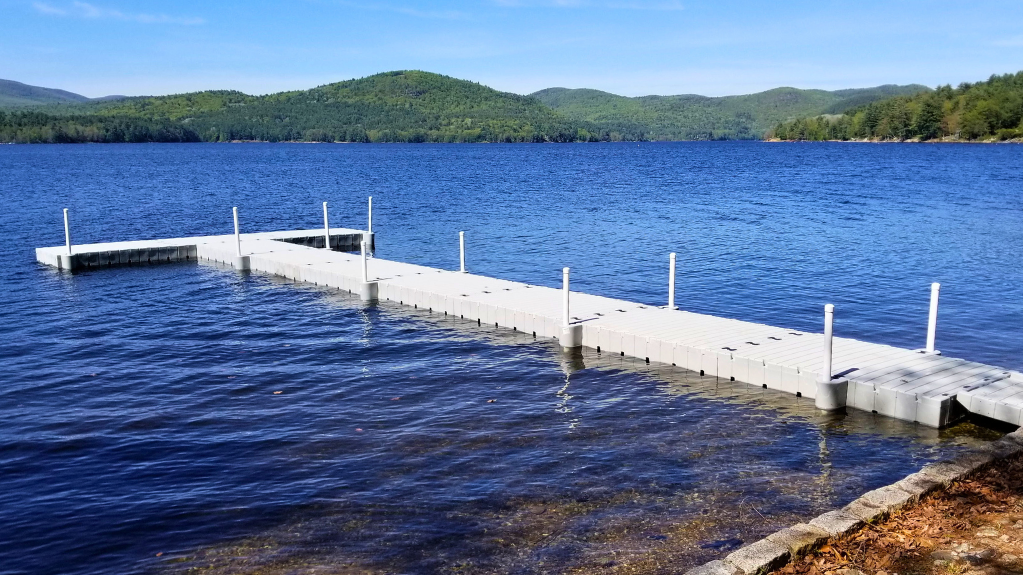Browsing the Options: Picking the Right Dock Company for Your Floating Dock Job
Browsing the Options: Picking the Right Dock Company for Your Floating Dock Job
Blog Article
Upgrade Your Waterfront With Durable Floating Docks
Updating your beachfront with long lasting floating docks can significantly improve both functionality and aesthetic appeals, providing a flexible solution for different water tasks. These structures are made to adapt to ever-changing water degrees, making sure safety and access throughout the seasons. With a range of products available, consisting of low-maintenance choices and typical wood, selecting the ideal dock can complement your individual style and satisfy practical demands. However, recognizing the nuances of setup and maintenance is vital for guaranteeing long life and performance. What aspects should you consider when making this investment?
Benefits of Floating Docks
Floating docks offer a multitude of benefits that boost their charm for different maritime applications. Unlike typical fixed docks, floating docks surge and autumn with the tide, making certain constant ease of access for watercrafts and boat regardless of ecological conditions.
In addition, floating docks are easier to mount and move, giving versatility for seasonal or temporary use. Their modular style enables modification to fit specific demands, whether for exclusive marinas, property beachfronts, or commercial applications.
Moreover, floating docks develop marginal disturbance to the aquatic environment, preserving local ecological communities and decreasing the chance of disintegration. They also supply enhanced security and security for customers, as their buoyant nature provides a much more flexible surface area than rigid structures.
In addition, floating docks can help with a diverse variety of tasks, such as fishing, swimming, and recreational boating, making them a useful property for beachfront development. Their versatility and functionality make floating docks a favored selection for a selection of naval projects.
Choosing the Right Materials
Selecting suitable materials for floating docks is important to their durability, performance, and general efficiency. When selecting materials, think about variables such as ecological direct exposure, upkeep demands, and architectural honesty. Usual products consist of timber, plastic, aluminum, and composite choices, each offering distinct advantages and drawbacks.
Wood, while aesthetically pleasing, calls for normal upkeep to stop rot and degeneration. Pressure-treated wood can enhance sturdiness, however it may still catch water damages with time. Plastic floats, typically made from high-density polyethylene, are resistant to corrosion and call for marginal upkeep, making them an attractive selection for low-maintenance applications.
Light weight aluminum is one more practical option, recognized for its stamina and lightweight homes. It is resistant to corrosion and can stand up to severe weather problems, although it may be more pricey than other products. Composite materials incorporate the very best characteristics of timber and plastic, providing a resilient and low-maintenance alternative that resembles the appearance of timber without the connected downsides.
Eventually, the choice of product should straighten with the intended usage, environmental factors to consider, and budget restraints, guaranteeing a sturdy and practical floating dock that meets your details needs.
Installment Process Introduction
The effective setup of a drifting dock counts on mindful preparation and implementation, ensuring that it runs properly in its desired environment. The primary step involves examining site conditions, consisting of water deepness, shoreline functions, and dominating climate patterns, which will notify the dock style and anchoring system.
Adhering to the site evaluation, the following stage is to prepare the floating dock components. This includes constructing the frame, securing floats, and connecting any kind of required hardware. It is vital to ensure that all connections are robust and water-resistant to hold up against aquatic problems.
As soon as the dock is assembled, the installation process begins with positioning the dock in the water. This can include a crane or other lifting devices, particularly for bigger frameworks. Appropriate placement is crucial for capability and safety and security.

Upkeep Tips for Durability
Regular upkeep is important for ensuring the durability and optimal efficiency of a floating dock. To accomplish this, begin with routine inspections at the very least twice a year, concentrating on the integrity of the dock's structure, consisting of the flotation tools and connecting equipment. Look for indicators of wear, corrosion, or damage, and address any type of concerns quickly to avoid more degeneration.
Cleaning up is an additional vital facet of upkeep. Remove debris, algae, and barnacles from the dock's surface area to stop slippery problems and keep visual appeal. Utilize a light cleaning agent and a soft brush to prevent harming the dock's products.
Additionally, guarantee that the dock is appropriately secured and safeguarded to withstand seasonal changes in water levels and weather condition problems. Examine the anchoring system for security and try this web-site make changes as necessary.
Enhancing Your Outdoor Aesthetic
To create a visually appealing outside area, integrating a drifting dock can substantially boost the total visual of your beachfront residential or commercial property. Floating docks are not only functional yet can likewise work as a striking prime focus that complements the natural environments - floating docks. Available in various products and layouts, these docks can be customized to match your residential or commercial property's building design and landscape
The enhancement of ornamental aspects, right here such as integrated lighting or fashionable barriers, additionally raises the dock's visual appeal. Take into consideration making use of natural wood coatings, which mix effortlessly with the environment, or choosing modern-day products like aluminum or composite outdoor decking that use a smooth, modern appearance.
Tactically placing planters or seating locations on or around the dock can create welcoming areas that encourage leisure and pleasure of waterfront sights. Furthermore, incorporating colors and structures that harmonize with your landscape will certainly create a natural aesthetic throughout your exterior area.

Final Thought

Upgrading your beachfront with resilient floating docks can substantially enhance both performance and appearances, offering a functional solution for different water tasks. Unlike traditional fixed docks, floating docks increase and loss with the trend, guaranteeing regular accessibility for boats and boat no matter of environmental conditions.Choosing proper products for floating docks is important to their long life, efficiency, and overall effectiveness.When the dock is constructed, the installment process commences with positioning the dock in the water.In recap, floating docks deal countless advantages, including versatility to water degree adjustments and a selection of product options.
Report this page